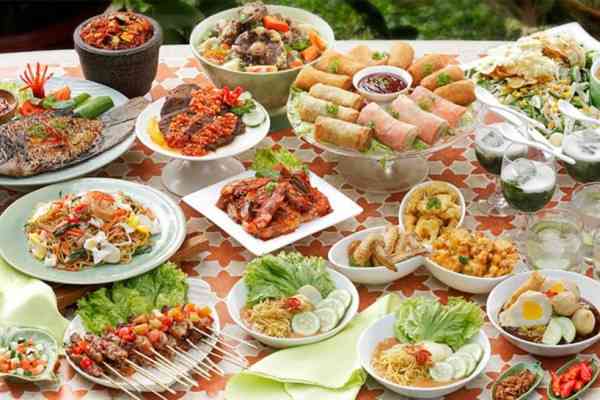The Evolution of Street Food: A Global Culinary Journey – Street food is more than just a convenient bite on the go — it’s a living, breathing cultural experience. From smoky skewers sizzling on roadside grills in Bangkok to taco stands on the corners of Mexico City, street food reflects the soul of a place. It tells stories of heritage, migration, innovation, and adaptation. In recent years, street food has transformed from an informal culinary scene to a global gastronomic phenomenon, attracting foodies, chefs, and travelers alike.
A Brief History of Street Food
Street food has existed for thousands of years. Ancient Greek vendors sold small fried fish to the working class, while in ancient China, street food carts were common in bustling cities. The Roman Empire had thermopolia—small establishments offering ready-to-eat meals, especially for those without kitchens at home.
What began as a necessity for busy workers and the urban poor gradually bonus new member 100 evolved into a vibrant culture. In every civilization, as cities grew and commerce flourished, so did the demand for quick, affordable, and delicious food. Street food became a solution to feed the masses, a chance for culinary creativity, and a way for immigrants to introduce their flavors to new communities.
Street Food Around the World
Every country boasts its own unique street food scene, shaped by local ingredients, customs, and history.
-
Thailand: Often referred to as the street food capital of the world, Thailand’s culinary streets are a feast for the senses. Dishes like pad Thai, mango sticky rice, and grilled satay are sold on nearly every corner. Bangkok’s night markets are particularly famous, drawing both locals and tourists eager to sample authentic Thai flavors.
-
Mexico: Tacos al pastor, tamales, elotes (grilled corn), and churros represent just a few of Mexico’s diverse street offerings. Each region contributes its own twist—spicy, tangy, and rich with fresh herbs. Street food here is a strong reflection of indigenous and Spanish culinary influences.
-
India: Indian street food is an explosion of flavors. From pani puri in Mumbai to kathi rolls in Kolkata, vendors offer countless regional snacks bursting with spice. Hygiene is a growing concern, but that hasn’t slowed its popularity. Street food is an integral part of daily life and social culture in India.
-
Turkey: Turkish street food is hearty and full of history. Simit (sesame-encrusted bread rings), doner kebabs, and balik ekmek (fish sandwiches by the Bosphorus) showcase the country’s rich Ottoman culinary heritage. Street food here is not only delicious but beautifully tied to location and tradition.
-
Nigeria: Suya (spicy grilled meat skewers), puff-puff (sweet fried dough), and akara (bean cakes) are favorites across Nigeria. The country’s street food scene is dynamic and deeply tied to local ingredients like cassava, plantains, and yams.
-
United States: America’s street food landscape is a melting pot. Food trucks and stands offer everything from New York pretzels to Korean BBQ tacos in Los Angeles. The modern food truck movement, inspired by both nostalgia and global cuisine, has redefined street food for the Instagram era.
The Modern Street Food Movement
In the last decade, street food has undergone a renaissance. What was once considered low-brow or unregulated is now celebrated. Food festivals, markets, and even Michelin stars have elevated street food to new heights.
One of the main forces behind this transformation is globalization. As people travel more and cultures blend, there’s a growing appreciation for authentic, accessible food. Millennials and Gen Z, in particular, seek out food experiences that are informal, immersive, and photogenic.
Social media has played a crucial role in this evolution. A simple dish wrapped in banana leaf or a colorful boba drink can go viral in minutes. Platforms like Instagram, TikTok, and YouTube have made street food stars out of humble vendors, sparking tourism and even international fame.
Chefs, too, are embracing street food. Many Michelin-starred chefs are now experimenting with street food-inspired menus, while others have left fine dining to return to their roots with gourmet street food concepts.
Why Street Food Matters
Street food is more than just food. It represents livelihood, innovation, and identity. For many vendors, it’s a pathway out of poverty—a low-barrier entry into entrepreneurship. It also acts as a bridge between cultures, introducing people to new flavors and traditions through something as simple as a snack.
In times of crisis—like during the COVID-19 pandemic—street food proved its resilience. While restaurants shuttered, many street vendors adapted quickly, offering takeout, delivery, or simplified menus. Their ability to pivot under pressure highlighted the importance of flexibility and community support in the food industry.
Challenges Faced by Street Food Vendors
Despite its charm, the street food industry is not without challenges. Vendors often operate in a gray zone of legality, facing inconsistent regulations, lack of sanitation infrastructure, and occasional police harassment. In many cities, efforts to “clean up” urban spaces have pushed street vendors out, erasing not only jobs but also cultural heritage.
There’s also the question of health and hygiene. Without access to clean water or storage, some vendors struggle to meet safety standards. However, many are actively improving practices, especially with training and support from local organizations.
The Future of Street Food
The future of street food looks promising. Cities around the world are beginning to recognize its value—economically, culturally, and socially. Urban planners are incorporating vendor-friendly spaces, while governments are issuing permits and creating guidelines to legitimize and support street food businesses.
Technology is playing a role too. Mobile apps help customers find nearby vendors, track wait times, and leave reviews. Digital payments have simplified transactions, especially in cashless economies.
Sustainability is also entering the conversation. More vendors are turning to eco-friendly packaging, sourcing local ingredients, and reducing waste. With climate concerns rising, the street food industry is poised to lead by example—offering delicious food with a lower carbon footprint.

